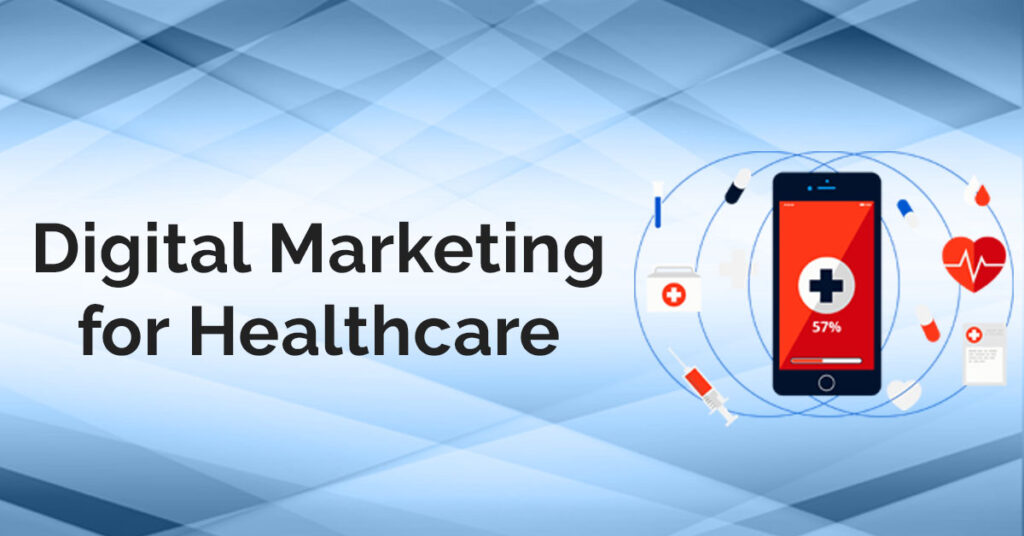Table of Contents
Let’s be real—people don’t find doctors the way they used to. They don’t flip through phonebooks or walk into the first clinic they see. Instead, they Google, they scroll, they compare reviews, check your Instagram, and maybe even watch a video or two before booking an appointment.
That’s where healthcare digital marketing comes in. It’s how you show up in those searches, how you build trust online, and how you keep your clinic or hospital top of mind—without even being in the room.
If you’re in the healthcare world and still relying only on referrals or walk-ins, this is your sign to take digital marketing seriously. Let’s break it down together.
So, What Exactly is Healthcare Digital Marketing?
In simple words, it’s using digital tools to attract, connect, and communicate with patients. We’re talking about:
- Appearing at the top when someone Googles ‘physiotherapist near me’.
- Sharing tips on how to manage diabetes on Instagram
- Getting reviews that make people feel good about choosing your clinic
Healthcare digital marketing isn’t just about ads—it’s about building a relationship with your patients, online.
Why It’s a Game-Changer for Healthcare Providers
Here’s the truth: patients are smart. They don’t just want treatment—they want confidence in who’s treating them. And that confidence often starts online.
In fact:
- Around 80% of people check the internet before making a health decision
- Most of them trust online reviews like they trust a friend’s advice
- And searches for “doctor near me” or “hospital open now” are happening 24/7
If your practice isn’t showing up when people are searching, you’re losing patients without even knowing it.
That’s why healthcare digital marketing isn’t just a nice-to-have anymore—it’s a must.
What Makes a Winning Healthcare Digital Marketing Plan
Let’s make it simple. Here’s what actually works:
1. A Website That Works for You (Not Against You)
Your website should load quickly, work smoothly on phones, and be super easy for visitors to find what they need. Think of it like your digital waiting room—it’s got to feel clean, helpful, and welcoming.
It should also answer real questions like:
- What services do you offer?
- How can someone book an appointment?
- Where are you located?
If your site confuses people or takes forever to load, they’ll click away—and never come back.
2. SEO (So People Can Actually Find You)
SEO stands for Search Engine Optimization. It’s how you show up when someone Googles “dentist near me” or “best heart specialist in [your city].”
It involves adding the right words, updating your business listings, and making sure your content helps people.
Good SEO means your healthcare digital marketing is working for you 24/7, even while you’re asleep.
3. Content That Builds Trust
People want answers. So give them answers—through blogs, videos, or FAQs.
For example, if you’re a gynecologist, write a simple post like “When Should You See a Gynecologist?” Or if you’re a pediatrician, share a quick video on common childhood fevers.
At the core of healthcare digital marketing is content that truly helps people. It shows patients you care, even before they step into your clinic.
4. Be Present on Social Media (Even Just a Little)
You don’t have to be a TikTok doctor doing dances (unless you want to!). But being on platforms like Instagram or Facebook helps people see the human side of your practice.
Share tips, patient testimonials (with permission), behind-the-scenes clinic updates, or just a friendly “We’re here for you!”
Social media makes your clinic feel more approachable. And that’s a huge win in healthcare digital marketing.
5. Manage Your Online Reputation Like a Pro
People read reviews. A lot of them. And they matter.
Encourage happy patients to leave reviews on Google, Practo, or wherever your audience is. Respond kindly to every review—even the not-so-great ones.
Managing your reputation is one of the most powerful parts of healthcare digital marketing. It builds trust faster than any ad.
6. Paid Ads for a Quick Boost
If you’re launching a new service or clinic, consider running a Google or Facebook ad. These ads can target exactly who you want—based on age, location, or even interests.
It’s a great way to jumpstart visibility while your organic marketing builds over time.
In short, paid ads are like turning on a tap in healthcare digital marketing—they bring in leads fast when done right.
7. Email: The Most Underused Secret Weapon
Ever got a gentle reminder for your next health checkup? That’s email marketing done right.
Keep in touch by sending newsletters, gentle appointment reminders, or timely health tips based on the season. Email keeps your name fresh in your patients’ minds and adds a personal touch.
Best part?It doesn’t cost much—and it delivers great results in healthcare digital marketing.
What Can You Expect From a Good Digital Strategy?
Here’s what happens when you do it right:
- More people find you online
- Your practice feels more trustworthy
- Patients engage with you beyond the appointment
- You stay ahead of local competitors
- You grow—without relying only on word-of-mouth
And that’s exactly what healthcare digital marketing is designed to do.
Real Example: How One Small Clinic Got Big Results
Dr. Anjali, a pediatrician in Jaipur, had a simple goal: get more visibility. She worked with a digital marketing team to improve her SEO, post weekly parenting tips on Instagram, and collect reviews from happy moms and dads.
Six months later?
- She went from 5 to 25 new patients per week
- Her clinic’s Google rating jumped from 3.8 to 4.9
- Parents were booking appointments directly from her Instagram bio
That’s the power of healthcare digital marketing done right—and with heart.
Final Thoughts: It’s Not About Tech—It’s About People
Don’t get overwhelmed by fancy marketing terms or tools. At its core, healthcare digital marketing is about connecting with people. It’s about being where your patients are and showing them that you care—even before they walk in the door.
You don’t need to do everything at once. Start small. Pick one or two channels, stay consistent, and build from there.
Because in today’s world, the best care starts online.

